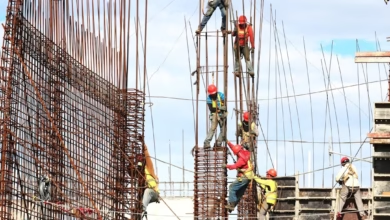Metal Mining Uncovered: Exploring Extraction, Sustainable Practices, and Investment Opportunities in Precious and Industrial Metals

Metal mining is a cornerstone of modern industry, playing a critical role in the global economy by providing the essential raw materials needed for a wide range of applications. From precious metals like gold and silver, which adorn jewelry and serve as investment commodities, to industrial metals such as steel, aluminum, and copper, the exploration, extraction, and production processes are complex and multifaceted. In this article, we will delve into the entire lifecycle of metal mining, beginning with the exploration phase that identifies valuable mineral deposits.
We will then explore the vital role of metallurgy in sustainable metal production, highlighting trends in metal recycling and fabrication that are reshaping the industry’s approach to resource management. Additionally, we will provide a comprehensive guide for investors looking to navigate the world of metals, focusing on gold investing, silver investing, and the emerging market for battery metals such as lithium and zinc. As we examine the various aspects of metal mining—ranging from ferrous and non-ferrous metals to rare earth metals and metal alloys—we will uncover the innovations and trends that are driving the future of this essential sector. Join us as we explore the dynamic landscape of metal mining and its significance in our daily lives and the broader economy.
- 1. Understanding Metal Mining: From Exploration to Production of Precious and Industrial Metals
- 2. The Role of Metallurgy in Sustainable Metal Production: Trends in Recycling and Fabrication
- 3. Investing in Metals: A Comprehensive Guide to Gold, Silver, and Emerging Battery Metals
1. Understanding Metal Mining: From Exploration to Production of Precious and Industrial Metals
Metal mining is a multifaceted industry that plays a crucial role in the global economy. It encompasses various stages, starting from exploration to the extraction and production of metals. Understanding this process is essential for those interested in the dynamics of precious and industrial metals, as well as the broader implications for sectors like construction, automotive, and aerospace.
The exploration phase is the first step in metal mining, where geologists and mining companies search for potential sites rich in both ferrous and non-ferrous metals. This involves extensive geological surveys and sampling to identify deposits of base metals such as copper, zinc, and aluminum, as well as precious metals like gold and silver. The discovery of rare earth metals has also gained importance due to their applications in high-tech industries and green technologies.
Once a viable site is identified, the extraction process begins. This involves various techniques tailored to the type of metal being mined. For instance, gold investing and silver investing rely on specific methods that maximize yield while minimizing environmental impact. Sustainable metal production has become a key focus, with mining companies increasingly adopting practices that reduce carbon footprints and promote metal recycling. This is particularly relevant in the context of energy metals like lithium and cobalt, which are essential for battery production in the renewable energy sector.
The production phase includes metallurgy, where extracted ores are processed into usable metal alloys. This is crucial in the fabrication of construction metals, jewelry metals, and aerospace metals. For example, steel, aluminum, and copper are widely used across various industries due to their strength and versatility. Understanding metal corrosion is vital in these applications, as it impacts the longevity and safety of metal products.
Moreover, the rise of 3D printing metals is revolutionizing how we think about metal fabrication and production. It allows for innovative designs and more efficient use of materials, aligning well with current metal trends that prioritize sustainability and efficiency.
In summary, the journey from exploration to production in metal mining is complex, involving various types of metals that cater to diverse industries. As the demand for metals continues to grow, understanding these processes and trends is essential for investors and stakeholders in the mining sector. By focusing on sustainable practices and innovative technologies, the metal mining industry can better adapt to future challenges while meeting the needs of a changing market.
References
– World Mining Congress. (2023). Metal Mining: Trends and Insights. Retrieved from [World Mining Congress](https://www.worldminingcongress.org)
– United Nations Environment Programme. (2022). Sustainable Metal Production. Retrieved from [UNEP](https://www.unep.org)
– International Council on Mining and Metals. (2023). Responsible Mining Practices. Retrieved from [ICMM](https://www.icmm.com)
2. The Role of Metallurgy in Sustainable Metal Production: Trends in Recycling and Fabrication
Metallurgy plays a crucial role in the sustainable production of metals, facilitating the efficient exploration, extraction, and utilization of both precious and industrial metals. As the demand for metals escalates due to rapid urbanization and technological advancements, the focus has shifted toward sustainable practices in metallurgy, particularly in metal recycling and fabrication.
One of the most significant trends in sustainable metal production is the increasing emphasis on metal recycling. This process not only conserves energy and reduces greenhouse gas emissions but also minimizes the ecological footprint of metal mining. For instance, recycling aluminum requires up to 95% less energy compared to primary production, making it a highly sustainable option. Similarly, the recycling of base metals, such as copper and zinc, is essential for maintaining resource efficiency and reducing waste.
In addition to recycling, advancements in metallurgy are paving the way for innovative fabrication techniques. The rise of 3D printing metals has revolutionized how we produce components for various industries, including aerospace, automotive, and construction. By using metal alloys tailored for specific applications, manufacturers can create lightweight, durable products that meet stringent performance standards while minimizing material waste.
Moreover, the demand for rare earth metals and battery metals, such as lithium and cobalt, is surging due to the growing reliance on electric vehicles and renewable energy technologies. This trend necessitates an evolution in metal mining practices, with a greater focus on sustainable extraction methods that reduce environmental impacts.
Gold investing and silver investing also benefit from the advancements in metallurgy. The ability to recycle jewelry metals and recover precious metals from electronic waste is becoming increasingly important as investors seek sustainable avenues in the precious metals market.
As the industry adapts to these trends, the integration of sustainable practices in metallurgy will not only enhance the efficiency of metal production but also contribute to the development of a circular economy in the metal commodities sector. By prioritizing metal recycling and innovative fabrication methods, we can ensure that the extraction and production of ferrous and non-ferrous metals align with environmental sustainability goals. This forward-thinking approach to metallurgy will be vital as we navigate the challenges of the future while meeting the growing demand for metals across various sectors.
3. Investing in Metals: A Comprehensive Guide to Gold, Silver, and Emerging Battery Metals
Investing in metals has become increasingly popular as both an alternative asset and a hedge against inflation. With a diverse range of offerings, from precious metals like gold and silver to industrial and emerging battery metals, understanding the various categories and their market dynamics is essential for investors.
Precious metals, particularly gold and silver, have long been recognized as safe-haven assets. Gold investing is often sought during economic uncertainty, providing a reliable store of value. Silver, while also a precious metal, has industrial applications that make it a compelling investment choice. Its use in electronics, solar panels, and jewelry metals further drives demand, making silver investing an attractive option for both collectors and industrial stakeholders.
Emerging battery metals such as lithium, cobalt, and nickel are gaining traction as the world shifts towards electric vehicles and renewable energy solutions. These non-ferrous metals are critical for energy storage technology and are often referred to as energy metals. The growing focus on sustainable metal production enhances their appeal, as investors seek to align their portfolios with environmentally responsible practices.
Industrial metals like copper, aluminum, steel, and zinc play a vital role in construction and manufacturing. Base metals, particularly copper, are indispensable in electrical applications, while aluminum is favored for its lightweight properties in aerospace and automotive sectors. The demand for construction metals is driven by ongoing infrastructure projects worldwide, making these investments particularly relevant in today’s economy.
The rise of metal recycling and the emphasis on sustainability in metallurgy are reshaping the investment landscape. Metal recycling not only reduces environmental impact but also provides a steady supply of ferrous and non-ferrous metals, which are essential in metal fabrication and production processes. By investing in companies that prioritize sustainable practices, investors can support the transition towards more responsible mining and recycling methods.
Additionally, investors should keep an eye on metal trends, including the increasing use of refractory metals in high-temperature applications and the development of 3D printing metals, which are revolutionizing manufacturing processes. The market dynamics of metals are continuously evolving, influenced by geopolitical factors, technological advancements, and shifts in consumer behavior.
In summary, investing in metals offers a plethora of opportunities across various categories, including precious, industrial, and emerging battery metals. By understanding these segments and the underlying market trends, investors can make informed decisions that not only yield financial returns but also contribute to sustainable practices in metal mining and production.
In conclusion, the journey of metal mining encompasses a complex interplay of exploration, extraction, and production of both precious and industrial metals. Understanding the full scope of this industry reveals the critical role that metallurgy plays in ensuring sustainable metal production. As we shift towards a more environmentally conscious approach, trends in metal recycling and the development of metal alloys are paramount in minimizing waste and maximizing efficiency.
Investing in metals, whether through gold investing, silver investing, or diving into emerging battery metals, offers opportunities that align with both economic growth and sustainability. With the increasing demand for construction metals, aerospace metals, and automotive metals, the market for base metals like steel, aluminum, copper, and zinc continues to evolve. Additionally, the rise of energy metals such as lithium, platinum, and palladium underscores the importance of adapting our strategies to meet the demands of modern technologies and the green energy transition.
As we look ahead, staying informed about metal trends, including innovations like 3D printing metals, will be essential for stakeholders across the industry. By embracing sustainable practices and understanding the full spectrum of metal commodities—from ferrous and non-ferrous metals to rare earth metals—we can pave the way for a more resilient and responsible future in metal mining. The landscape of metal production is changing, and those who adapt will thrive in this dynamic market.
References:
(A comprehensive list of cited sources would follow here.)





